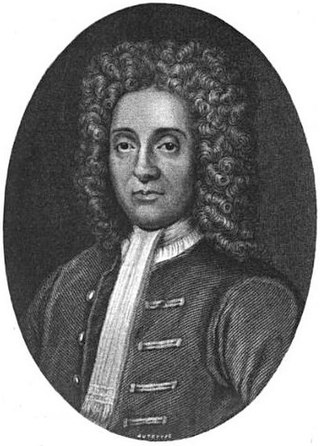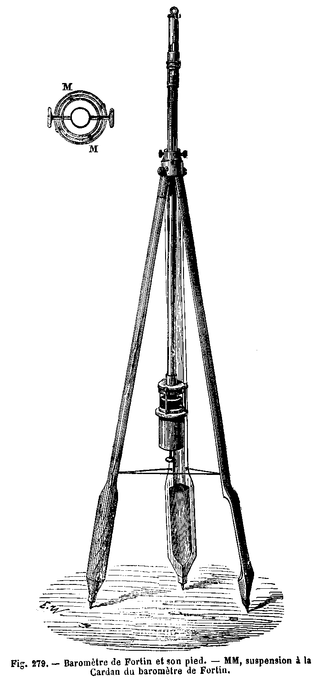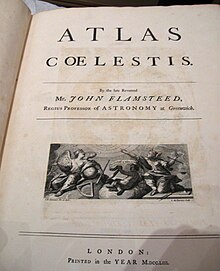
A constellation is an area on the celestial sphere in which a group of visible stars forms a perceived pattern or outline, typically representing an animal, mythological subject, or inanimate object.

A Flamsteed designation is a combination of a number and constellation name that uniquely identifies most naked eye stars in the modern constellations visible from southern England. They are named for John Flamsteed who first used them while compiling his Historia Coelestis Britannica.

Hydrus is a small constellation in the deep southern sky. It was one of twelve constellations created by Petrus Plancius from the observations of Pieter Dirkszoon Keyser and Frederick de Houtman and it first appeared on a 35-cm (14 in) diameter celestial globe published in late 1597 in Amsterdam by Plancius and Jodocus Hondius. The first depiction of this constellation in a celestial atlas was in Johann Bayer's Uranometria of 1603. The French explorer and astronomer Nicolas Louis de Lacaille charted the brighter stars and gave their Bayer designations in 1756. Its name means "male water snake", as opposed to Hydra, a much larger constellation that represents a female water snake. It remains below the horizon for most Northern Hemisphere observers.

Johann Elert Bode was a German astronomer known for his reformulation and popularisation of the Titius–Bode law. Bode determined the orbit of Uranus and suggested the planet's name.

Abbé Nicolas-Louis de Lacaille, formerly sometimes spelled de la Caille, was a French astronomer and geodesist who named 14 out of the 88 constellations. From 1750 to 1754, he studied the sky at the Cape of Good Hope in present-day South Africa. Lacaille observed over 10,000 stars using just a half-inch refracting telescope.

John Flamsteed was an English astronomer and the first Astronomer Royal. His main achievements were the preparation of a 3,000-star catalogue, Catalogus Britannicus, and a star atlas called Atlas Coelestis, both published posthumously. He also made the first recorded observations of Uranus, although he mistakenly catalogued it as a star, and he laid the foundation stone for the Royal Greenwich Observatory.
Timeline of astronomical maps, catalogs and surveys

Abraham Sharp was an English mathematician and astronomer.

A star chart is a celestial map of the night sky with astronomical objects laid out on a grid system. They are used to identify and locate constellations, stars, nebulae, galaxies, and planets. They have been used for human navigation since time immemorial. Note that a star chart differs from an astronomical catalog, which is a listing or tabulation of astronomical objects for a particular purpose. Tools using a star chart include the astrolabe and planisphere.

Eduard Heis was a German mathematician and astronomer.
The Bayer designation Sigma Cancri is shared by three star systems, in the constellation Cancer:

Celestial cartography, uranography, astrography or star cartography is the aspect of astronomy and branch of cartography concerned with mapping stars, galaxies, and other astronomical objects on the celestial sphere. Measuring the position and light of charted objects requires a variety of instruments and techniques. These techniques have developed from angle measurements with quadrants and the unaided eye, through sextants combined with lenses for light magnification, up to current methods which include computer-automated space telescopes. Uranographers have historically produced planetary position tables, star tables, and star maps for use by both amateur and professional astronomers. More recently, computerized star maps have been compiled, and automated positioning of telescopes uses databases of stars and of other astronomical objects.

An astronomical catalog or catalogue is a list or tabulation of astronomical objects, typically grouped together because they share a common type, morphology, origin, means of detection, or method of discovery. The oldest and largest are star catalogues. Hundreds have been published, including general ones and special ones for such items as infrared stars, variable stars, giant stars, multiple star systems, star clusters, and so forth.

Jean Nicolas Fortin (1750–1831) was a French maker of scientific instruments, born on 9 August 1750 in Mouchy-la-Ville in Picardy. Among his customers were such noted scientists as Lavoisier, for whom he made a precision balance, Gay-Lussac, François Arago and Pierre Dulong.

9 Pegasi is a supergiant star in the constellation Pegasus. Its apparent magnitude is 4.35.

A Celestial Atlas, full title: A Celestial Atlas: Comprising A Systematic Display of the Heavens in a Series of Thirty Maps Illustrated by Scientific Description of their Contents, And accompanied by Catalogues of the Stars and Astronomical Exercises is a star atlas by British author Alexander Jamieson, published in 1822. The atlas includes 30 plates, 26 of which are constellation maps with a sinusoidal projection. In some editions the plates are hand-colored. The atlas includes three new constellations invented by Jamieson: Noctua, Norma Nilotica, and Solarium. Two celestial hemispheres of the atlas are centered on the equatorial poles via polar projection and geocentric alignment. The atlas comprises stars visible only to the naked eye, making it less cluttered.
The Bayer designation γ Sagittarii is shared by two stars in the constellation Sagittarius:
Margaret Flamsteed is the first woman on record to be associated with astronomy in Britain. She was married to John Flamsteed, the Astronomical Observer. After John Flamsteed's death she oversaw publication of both of his most famous works: Historia Coelestis Britannica in 1725 and Atlas Coelestis in 1729. Without her, neither of these two important works would have been published.

















